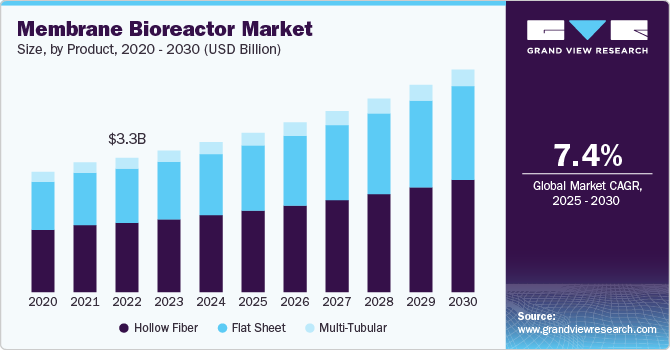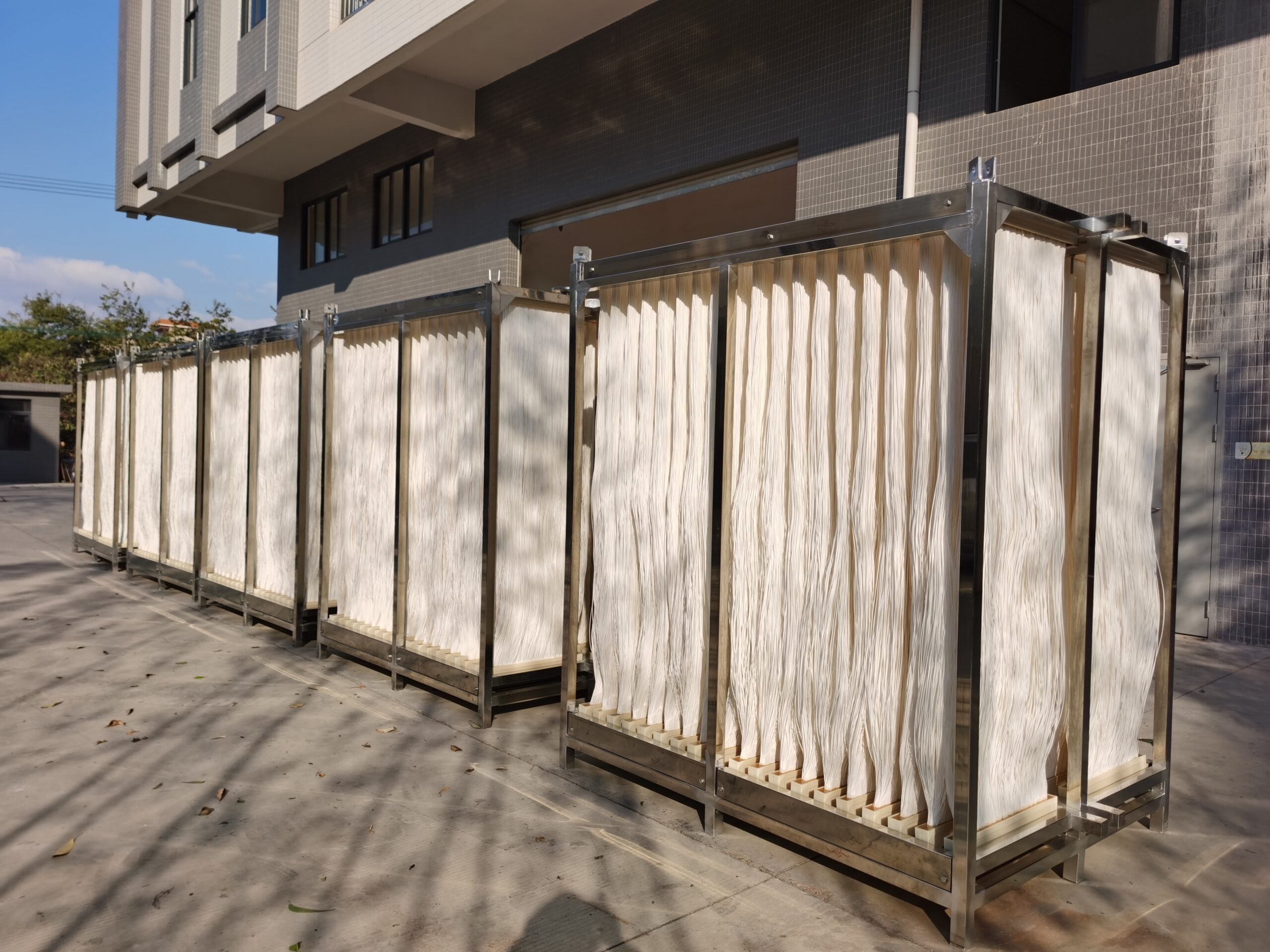How Membrane Bioreactor Can Help Meet Stringent Environmental Regulations
Wiki Article
Just How Membrane Bioreactors Are Changing Water Purification Solutions
The emergence of membrane bioreactors (MBRs) represents a significant improvement in the area of water filtration, combining organic therapy procedures with innovative membrane layer purification modern technologies. As international water deficiency intensifies, the role of MBRs in promoting drinkable water reuse and sustainable water management comes to be significantly essential.Review of Membrane Layer Bioreactors
Membrane layer bioreactors (MBRs) stand for a considerable development in water purification technology, as they incorporate biological therapy procedures with membrane layer filtration. This assimilation enhances the performance of wastewater therapy by using microorganisms to degrade natural toxins while at the same time utilizing semi-permeable membranes to different treated water from suspended microorganisms and solids.The MBR system usually consists of an organic reactor where the microbial populace metabolizes pollutants, adhered to by a membrane filtering device that maintains biomass and allows just tidy water to go through. This twin performance results in greater effluent high quality contrasted to conventional therapy methods. MBRs can be run in both batch and continual flow settings, offering adaptability in design and application.
They likewise make it possible for the recovery of water for reuse, thus contributing to water sustainability efforts. Overall, MBRs are at the leading edge of enhancing water therapy performance and quality, showcasing the potential for ingenious remedies in ecological administration.
Benefits of MBR Modern Technology
The integration of organic treatment with membrane filtration provides various benefits for water purification processes. One of the primary benefits of Membrane Bioreactor (MBR) technology is its capability to properly get rid of both natural and not natural pollutants, resulting in high-grade effluent. The membranes function as a physical barrier, stopping suspended solids and microorganisms from going through, which enhances the overall safety and reliability of cured water.Additionally, MBR systems require a smaller impact contrasted to traditional therapy techniques, permitting much more efficient space utilization. This portable layout is specifically helpful in metropolitan settings where land is restricted. MBRs likewise demonstrate operational adaptability, fitting varying influent qualities and circulation rates without significant performance destruction.
Moreover, the process supplies improved nutrient removal capacities, specifically for nitrogen and phosphorus, which are important for avoiding eutrophication in receiving waters. The lowered sludge production linked with MBR technology also converts to reduce disposal costs, making it a cost-efficient option over time - Membrane Bioreactor. Overall, the benefits of MBR innovation placement it as a leading option for lasting and innovative water filtration systems, dealing with both ecological and economic worries
Applications in Water Purification
Applications of Membrane Layer Bioreactor (MBR) innovation in water filtration are diverse and impactful, addressing different therapy needs throughout multiple markets. MBRs effectively integrate organic therapy procedures with membrane filtering, making them excellent for community wastewater therapy, industrial effluent monitoring, and also potable water reuse efforts.In metropolitan settings, MBRs are progressively used to boost the top quality of dealt with wastewater, enabling compliance with rigid discharge policies and helping with the recycling of water for irrigation and non-potable uses. Their small style likewise makes them suitable for metropolitan atmospheres where area is limited.
Industrially, MBR innovation is used to treat process water and wastewater, especially in markets such as food and drink, pharmaceuticals, and textiles. By efficiently eliminating pollutants and put on hold solids, MBRs assist industries reduce environmental influences while recouping valuable sources from wastewater streams.
In Addition, MBRs are obtaining grip in decentralized water treatment applications, where small-scale systems can be released in remote locations or creating areas. This versatility enables communities to attain lasting water administration options, improving access to tidy water while minimizing reliance on traditional therapy approaches.
Study and Success Stories

In one more instance, a textile production facility in Bangladesh took on MBR innovation to address its wastewater obstacles. The system decreased chemical oxygen need (COD) levels from 1,200 mg/L to less than 100 mg/L, therefore satisfying regulative criteria and substantially minimizing ecological influence.
The University of Cape Community's MBR installation has actually shown reliable in treating greywater for non-potable reuse on school. This project not only preserves drinkable water yet likewise offers as an educational design for lasting methods.
In addition, a fish and shellfish processing plant in Norway made use of MBR technology to deal with effluents having high levels of natural matter, achieving over 90% contaminant elimination. These situation studies highlight MBR modern technology's flexibility and its crucial function in boosting water quality across varied applications.
Future of Water Therapy Solutions
As international water scarcity and contamination obstacles intensify, ingenious water treatment remedies are coming to be progressively necessary to ensure sustainable access to clean water. The future of water treatment exists in the combination of innovative technologies that improve the effectiveness and efficiency of filtration procedures. Membrane bioreactors (MBRs) are at the leading edge of this advancement, incorporating organic therapy with membrane layer purification to generate high-grade effluent ideal for various applications.
Arising trends such as resource healing from wastewater, consisting of nutrients and energy, will certainly even more transform therapy facilities into green centers. Additionally, innovations in nanotechnology and membrane materials promise enhanced performance and long life of filtering systems.

Final Thought
In conclusion, membrane layer bioreactors represent a significant innovation in water purification modern technologies, successfully combining organic therapy with advanced membrane layer filtration. The many advantages, consisting of improved effluent high quality and reduced spatial needs, make MBRs especially ideal for urban applications. Their duty in potable water reuse and lasting water management highlights their value in addressing worldwide water deficiency difficulties. Proceeded r & d will certainly even more improve the efficacy and adoption of MBR innovation, ensuring a durable future for water therapy services.The development of membrane bioreactors (MBRs) stands for a substantial innovation in the field of water purification, merging biological therapy processes with innovative membrane Learn More Here layer purification modern technologies. As global water scarcity heightens, the duty of MBRs in helping with potable water reuse and sustainable water management becomes progressively vital. They likewise allow the healing of water for reuse, thus contributing to water sustainability campaigns.As international water shortage and contamination difficulties heighten, ingenious water treatment services are becoming increasingly essential to ensure lasting accessibility to clean water. Their role in potable water reuse and lasting water administration highlights their significance in dealing with global water deficiency obstacles.
Report this wiki page